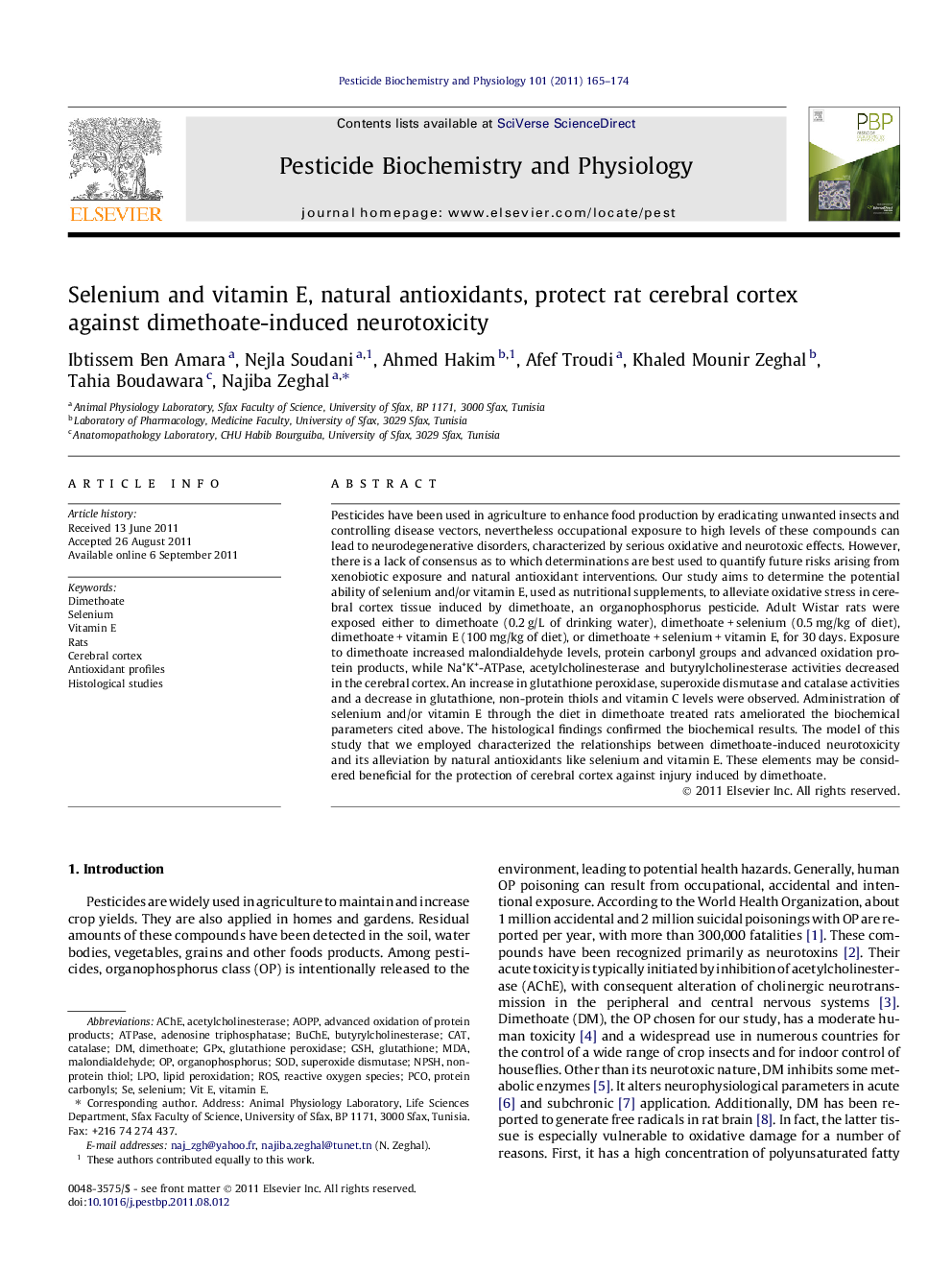| Article ID | Journal | Published Year | Pages | File Type |
|---|---|---|---|---|
| 2009819 | Pesticide Biochemistry and Physiology | 2011 | 10 Pages |
Pesticides have been used in agriculture to enhance food production by eradicating unwanted insects and controlling disease vectors, nevertheless occupational exposure to high levels of these compounds can lead to neurodegenerative disorders, characterized by serious oxidative and neurotoxic effects. However, there is a lack of consensus as to which determinations are best used to quantify future risks arising from xenobiotic exposure and natural antioxidant interventions. Our study aims to determine the potential ability of selenium and/or vitamin E, used as nutritional supplements, to alleviate oxidative stress in cerebral cortex tissue induced by dimethoate, an organophosphorus pesticide. Adult Wistar rats were exposed either to dimethoate (0.2 g/L of drinking water), dimethoate + selenium (0.5 mg/kg of diet), dimethoate + vitamin E (100 mg/kg of diet), or dimethoate + selenium + vitamin E, for 30 days. Exposure to dimethoate increased malondialdehyde levels, protein carbonyl groups and advanced oxidation protein products, while Na+K+-ATPase, acetylcholinesterase and butyrylcholinesterase activities decreased in the cerebral cortex. An increase in glutathione peroxidase, superoxide dismutase and catalase activities and a decrease in glutathione, non-protein thiols and vitamin C levels were observed. Administration of selenium and/or vitamin E through the diet in dimethoate treated rats ameliorated the biochemical parameters cited above. The histological findings confirmed the biochemical results. The model of this study that we employed characterized the relationships between dimethoate-induced neurotoxicity and its alleviation by natural antioxidants like selenium and vitamin E. These elements may be considered beneficial for the protection of cerebral cortex against injury induced by dimethoate.
Graphical abstractFigure optionsDownload full-size imageDownload as PowerPoint slideHighlights► Neurotoxicity induced by dimethoate (DM) in adult rats. ► The increase of malondialdehyde levels and catalase, superoxide dismutase and glutathione peroxidase activities. ► The decrease of acetylcholinesterase and butyrylcholinesterase activities. ► Vitamin E and/or selenium prevented oxidative stress against dimethoate in the cerebral cortex.
